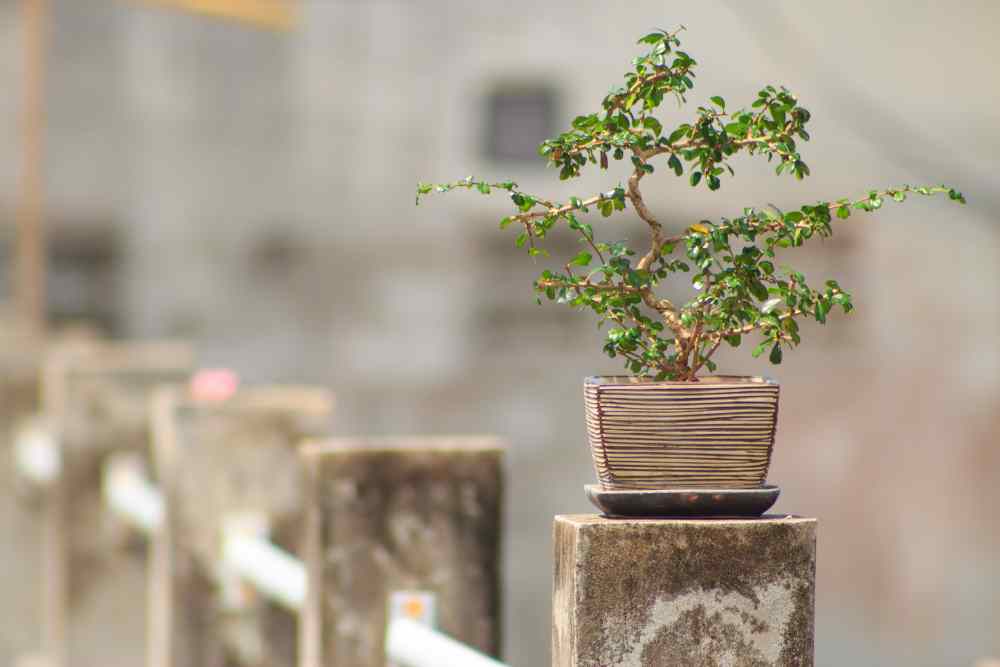Bonsai Gardening 5 Tips For Beginners
Bonsai is a Japanese art form that involves creating miniature trees from full-grown trees. It was created by the Japanese and originated in China.
For centuries, this type of horticulture has been practiced in Japan. It all began with a gentle reverence for the natural world. People can also express their aesthetic sense through it. As the name implies, a bonsai is a “tree in a pot.”
Growing bonsai trees requires a greater level of dedication than growing regular plants. Bonsai growers should always remember that a bonsai tree’s price and beauty are determined by its appearance and age. A bonsai tree must be pruned, trimmed, and shaped until it achieves the desired size and shape.
What Are The Different Bonsai Types
There are about ten basic styles of bonsai, the most common of which are formal upright, informal upright, slanting, windswept, cascade, and semi-cascade. The overall shape of the tree and how far the trunk slants away from an imaginary vertical axis are used to classify it.
Upright Formal (Chokkan)

A bonsai tree trained in the formal upright style mimics the growth of a tree in ideal natural conditions, making it relatively simple for a beginner bonsai grower. The trunk must be perfectly straight, tapering naturally and evenly from bottom to top, which is the most important requirement for this style. Because of their naturally tapered shape, larches, junipers, pines, and spruces are the best species for formal upright training.
Informal Upright (Moyogi)

For beginners, the informal upright style is the best option because it teaches more details about bonsai design. Trees bend or change their growth direction in response to their surroundings in nature. They may grow toward the sun or away from the wind or other trees. This natural curve of a tree trunk in an imperfect environment is represented by the informal upright bonsai style.
In the informal upright design, the top of the tree, its apex, is frequently positioned directly over its base, creating the overall effect of an upright tree. The majority of sturdy plant species are suitable for this style of training, but maples are the most popular.
Slanting (Shakkan)
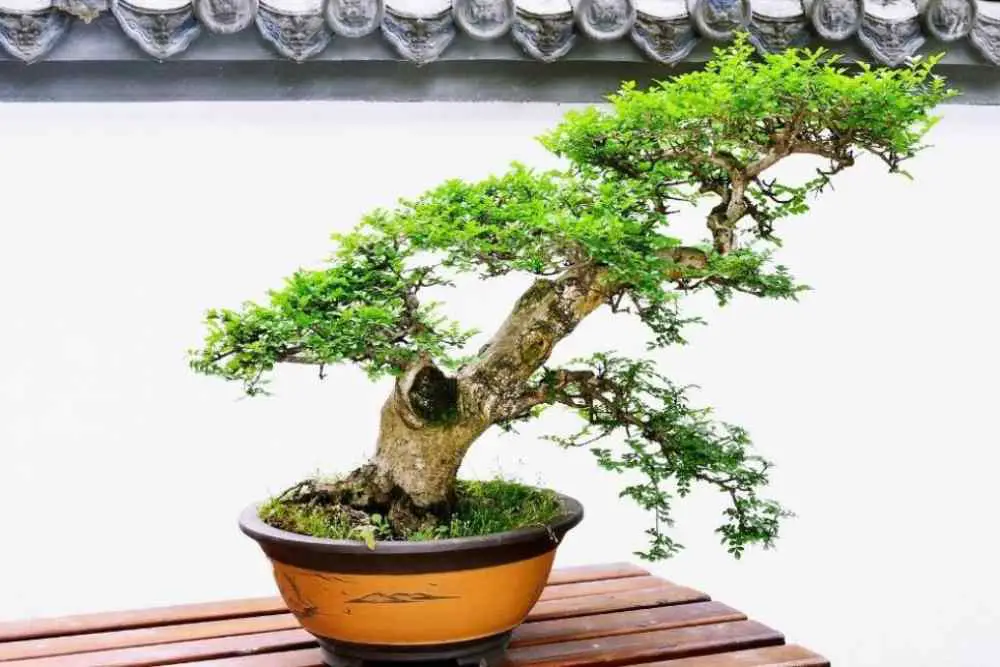
The trunk has a single more acute angle in the slanting style than in the informal upright style. When trees are young, they naturally slant due to exposure to strong winds or deep shade. The trunk of a bonsai tree trained in this style leans to the left or right, implying a difficult childhood. Because of the angle at which they lean, some bonsai trees that have been trained to slant appear to be about to fall over.
There’s no need to be concerned; these trees’ strong roots grow deep into the soil and support the tree’s weight. The slanting bonsai style is similar to the informal upright style, but the tree’s apex is not directly over the base in this style.
Windswept (Fukinagashi)
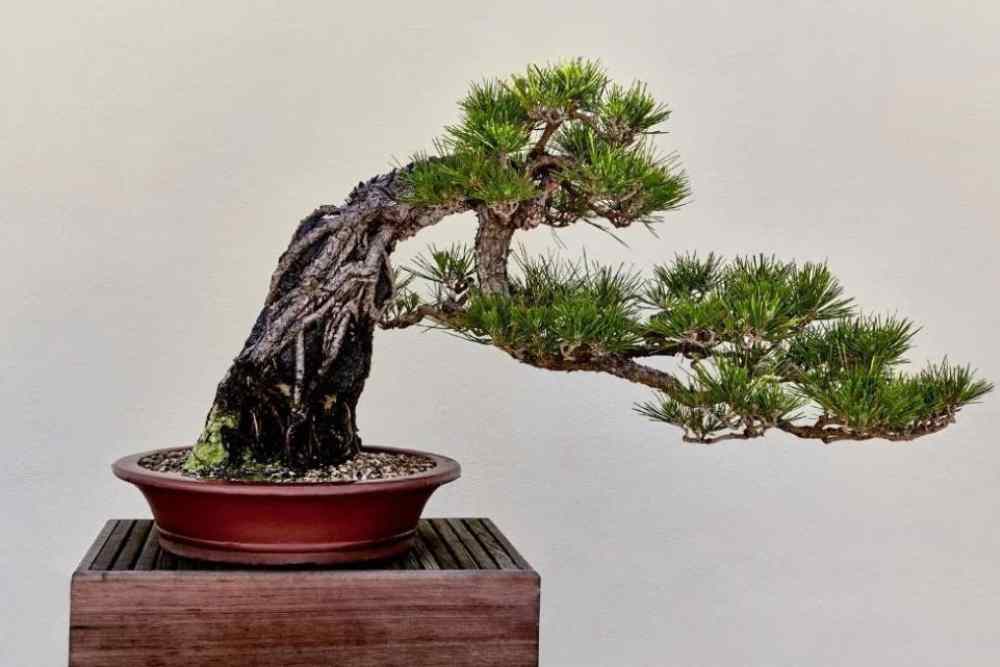
All of the living branches of the windswept bonsai point in the same direction, giving the impression that it grew up in a very windy environment. Windswept bonsai trees, when done correctly, can appear as if they are still being lashed by the wind. Basic bonsai tree styles, such as formal or informal upright, slanting, or semi-cascade trees, can be given a windswept effect.
Because of a combination of techniques, a bonsai may fall into more than one styling category. Coniferous trees are the best candidates for the windswept style. Because deciduous trees’ leaves face in all directions, it’s more difficult to achieve a convincing effect.
Forest (Yose-ue)
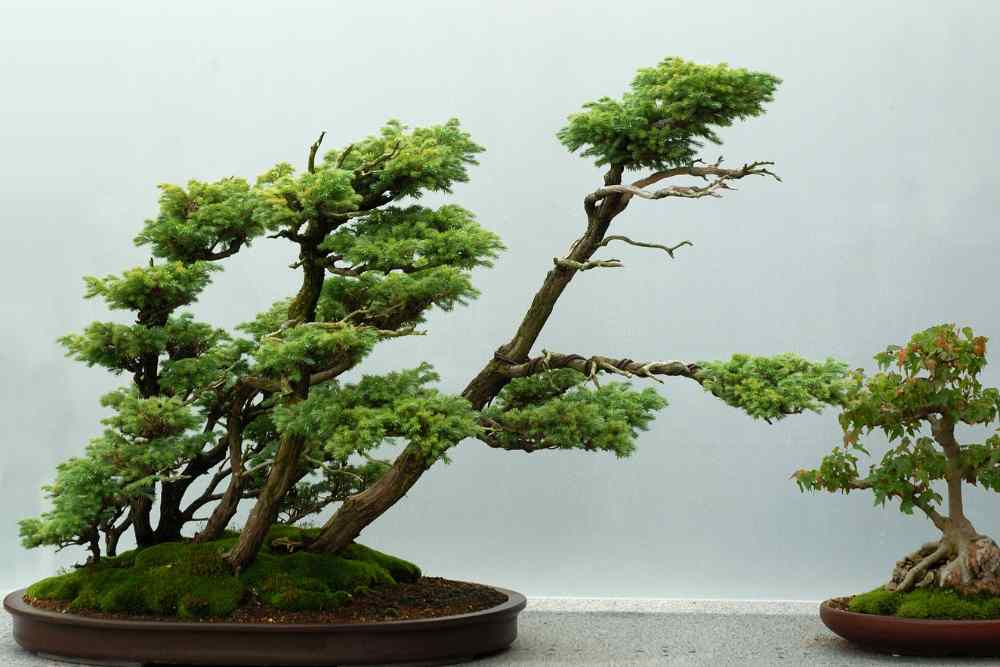
Several trees of the same species grow in a single pot in forest-style bonsai plantings. Trees are always planted in odd-numbered groups in the Japanese tradition, which is said to echo nature’s randomness. Despite the fact that a bonsai forest is viewed from the outside, the style is intended to give the viewer the impression of being inside a forest.
Cascade (Kengai)

The cascade bonsai style is reminiscent of a weathered old tree clinging to a cliff face. The tree’s growing tip extends below the container’s base in this style. A cascade bonsai appears to be fighting gravity or scrounging for sunlight.
The cascade (han-kengai) bonsai style is similar to the semi-cascade (han-kengai) bonsai style. The tree grows over the rim of the container but does not extend below the container’s base in this form. Many plant species will adapt to cascade training if they are not naturally strong upright. Juniper is a popular choice for cascade and semi-cascade training.
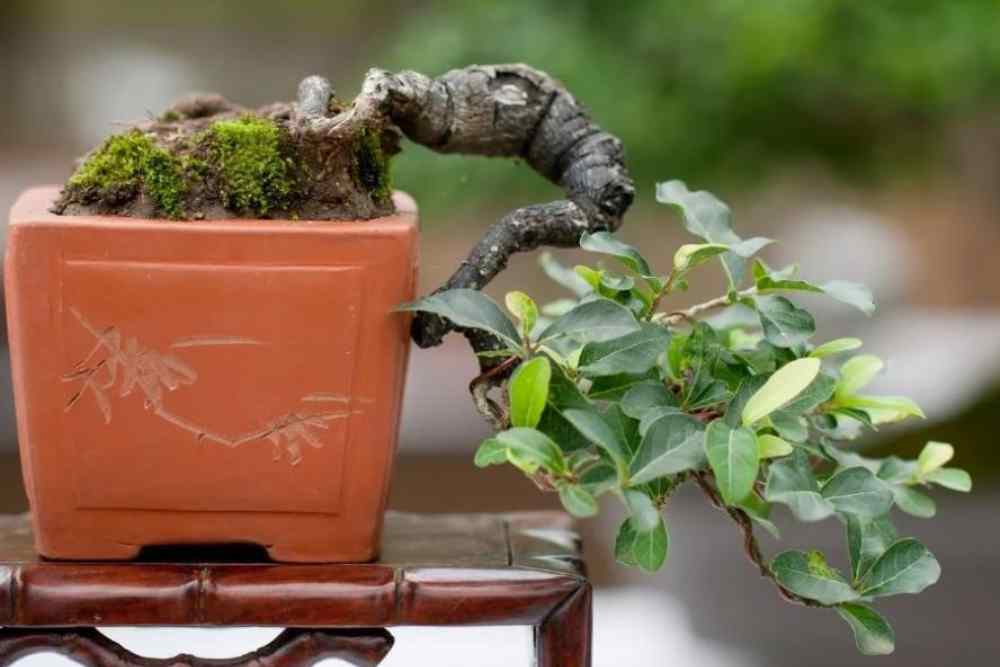
5 Tips To Grow Your Bonsai Plant
1. Choose Your Bonsai Plant
Not every plant is as effective as a bonsai. All parts of the ideal bonsai – trunk, branches, twigs, leaves, flowers, fruits, buds, and roots- must be in exact proportion to the tree’s size to give a realistic image of a mature tree.
Bonsai plants should have small leaves or leaves that become small under bonsai cultivation. Spruce, pine, zelkova, and pomegranate are examples of bonsai plants with small leaves and needles. Although leaves will naturally miniaturize as a tree grows in a shallow container, it is still necessary to start with a small-leafed variety.
2. Remove The Tree, Clean The Roots And Prune The Roots.
Remove the plant from its current pot with care, being careful not to break or tear the main stem. To help pry the plant out, you might want to use a potting shovel.
Before the plant is re-potted into the Bonsai pot, the majority of the roots will be cut. However, brushing away any dirt stuck to the roots is usually necessary to get a clear view of them. Brush away any clumps of dirt that are obstructing your vision.
This is where root rakes, chopsticks, tweezers, and other similar tools come in handy. Bonsai trees can quickly outgrow their containers if their growth is not properly controlled. When you pot your bonsai tree, prune its roots to keep it manageable and tidy.
Remove any large, thick roots as well as any upward-facing roots, leaving a network of long, slender roots near the soil’s surface. Water is absorbed from the root tips, so, in a small container, many thin root strands are generally better than a single large, deep one.
3. Pick The Right Container
The third step is to choose a container for your tree if you want to grow it in a pot. The use of shallow ceramic pots with vertical sides is common. A flat rock slab with soil mounded above the rock surface can also be used as an alternative.
Pots are available in ceramic, concrete, and glass-reinforced plastic. As a result, before you make a final decision, think about the look you want to achieve. Make sure it has at least two drainage holes in the bottom, whichever option you choose. Additionally, choosing a smaller pot will assist to keep the tree small.
Before you put the tree in the pot, make sure it has a fresh, new soil base to sit on that will give it the height it needs. As a base, place a layer of coarse-grain soil at the bottom of your empty pot.
Then, on top of that, add a finer, looser growing medium or soil. Use well-draining soil or medium – regular garden soil can retain too much water and drown the roots. Allow a small amount of space at the top of your pot to cover the roots of your tree. Place the tree in the desired orientation in your new pot.
Finish filling the pot with fine, well-draining soil or growing medium, making sure the tree’s root system is completely covered. A final layer of moss or gravel can be added if desired. This is not only attractive, but it can also aid in the stability of the tree.
Run a heavy gauge wire from the bottom of the pot through the drainage holes on the bottom of the pot if your tree isn’t staying upright in its new pot. To keep the plant in place, wrap the wire around the root system. To prevent soil erosion, place mesh screens over the pot’s drainage holes. Soil erosion occurs when water transports soil out of the pot through the drainage holes.
4. Prune The Plant For Shaping
The third step is to decide how you want the tree to look once it has grown to maturity. To shape the tree the way you want it to grow, use string or sturdy wire. Wiring is used to wrap branches and move them to the desired position over time using annealed copper or anodized aluminum wire of various sizes.
Remove the tree from its original pot, being careful not to damage the root system. Remove the dirt from the roots and trim them to create long, slender roots that sit near the surface of the soil.
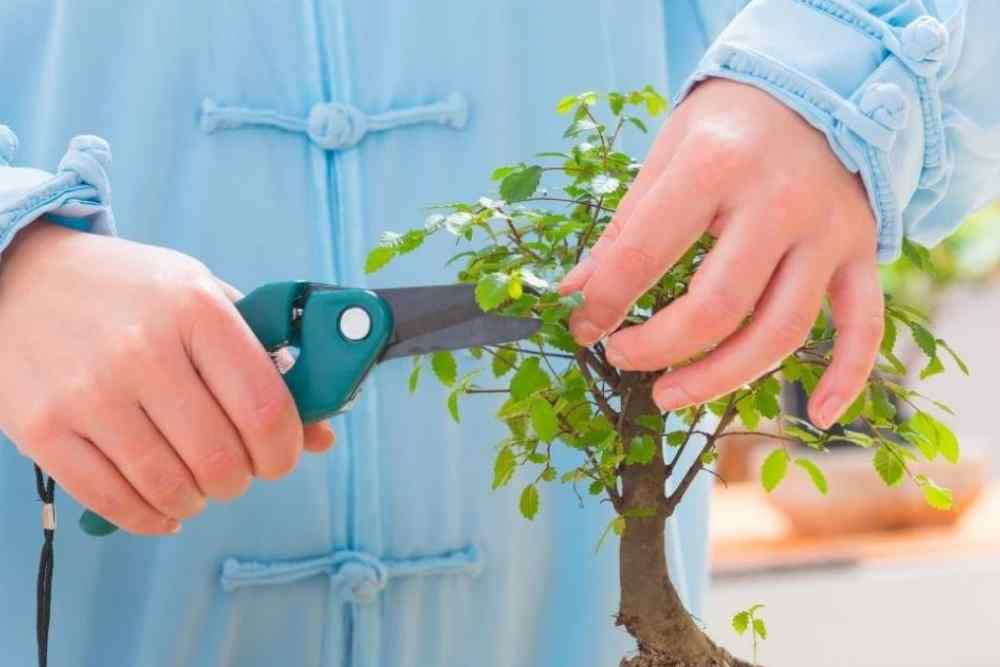
Fill your pot halfway with coarse-grain soil, then halfway with a rich growing medium. Make sure there’s enough room at the top to cover the tree’s roots. Place the tree in the pot and cover the roots with care. Beginners should learn specific techniques from a bonsai expert, a bonsai organization, reputable publications, or reliable online sources.
5. Place In Ideal Conditions
The potted tree is then placed in its ideal growing environment in the fourth step. If you want to grow it outside, you can do so right now. If you’re going to grow it indoors, make sure it gets the proper amount of light. Keep in mind that the tree will most likely grow in the direction of the light. Make sure the tree receives the proper amount of water for its species. If the tree has leaves, use pruning shears to prune it.
If you have chosen an evergreen, you can prune the tree by pinching off unwanted branches. Remove any vertically growing branches that are too tough to bend. Remove any branches that hide the tree’s trunk from view. Finally, prune any branches near the top of the tree that is too thick. It’s critical to keep an eye on the soil to ensure that it’s never completely dry, but also that it’s not overwatered and flooding the roots.
During the growing season, most bonsai trees should be fertilized (early spring to mid-fall). However, depending on the type of tree you’re working with, fertilizing requirements may differ. You can use granular or liquid fertilizer, and there are even fertilizers specifically designed for bonsai trees.
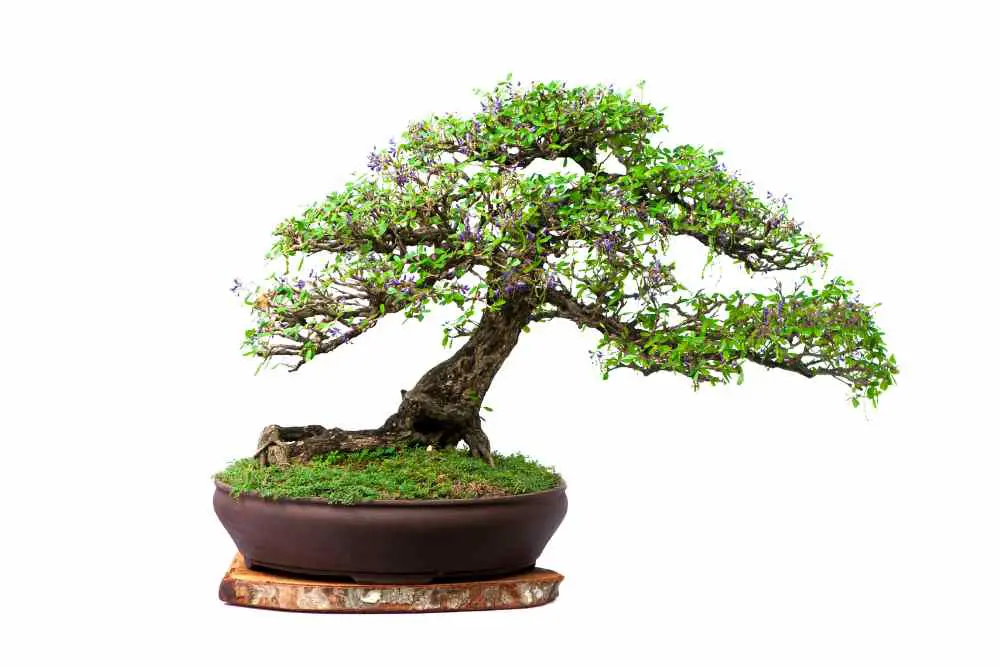
- 20+ Chic Boho Bedroom Ideas for a Cozy and Stylish Retreat - June 20, 2024
- 12+ Modern Boho Living Room Ideas to Create a Unique Oasis - June 10, 2024
- 10 Stunning Canopy Bed Ideas for a Dreamy Escape - May 16, 2024

